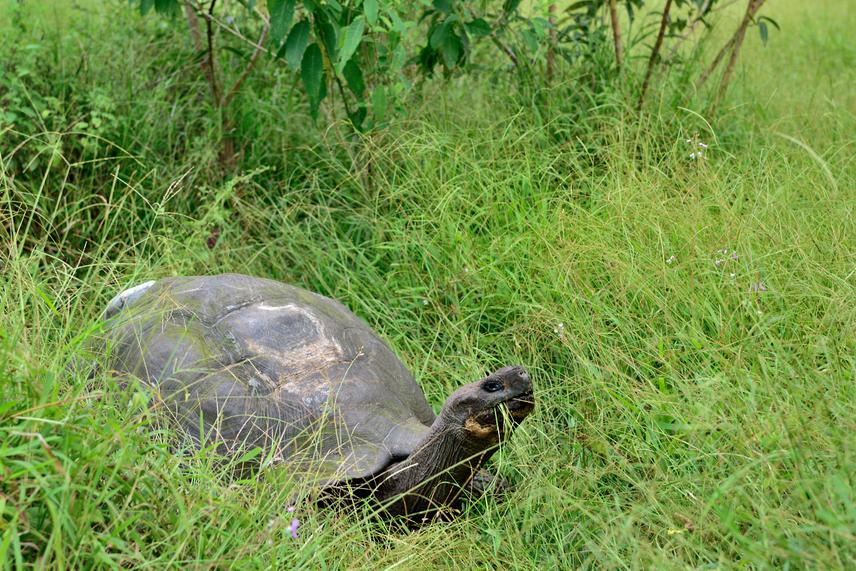Diego Ellis Soto
We aim to implement a novel conservation methodology that combines automated location of Galapagos tortoise nesting sites using unmanned aerial vehicles and fieldwork, with effective nest protection. We will increase the survival of Galapagos tortoise hatchlings, facilitate the work of Galapagos National Park (GNP) staff on conserve giant tortoises and provide indicators of success to local policy makers. Together with GNP rangers, we will find fresh nests, protect them from predation of invasive species and assess nest protection success. Identifying new nesting sites will pose a significant step towards better conserving endemic Galapagos tortoises during their most vulnerable life stage.

Adult male with a biologging tag. This device collects the hourly location of a tortoise through a ten-year span. It also records activity data that can be analyzed to identify potential nesting sites. ©Kamran Safi.
Galapagos tortoise populations face numerous threats on Santa Cruz Island. Examples include increasing human population and infrastructure development, i.e. roads, facilities for tourists and fencing of agricultural lands through the migratory routes of tortoises. Nesting sites are heavily affected by invasive species such as pigs and fire ants, which cause high mortality of eggs and hatchlings. This makes protecting tortoise nests a race against time; park rangers hoping to find and protect these before feral pigs dig them up and eat an entire generation of hatchlings. Currently the logistics of protecting nests are extensive and require several hours of park ranger’s time.
We propose to download GPS and accelerometer data from tagged female tortoises using an Unmanned Aerial Vehicle (UAV), running a developed algorithm that pinpoints exact coordinates of potential nesting areas, all while being in the field. Our work will have a strong conservation impact and involvement of local stakeholders and policy makers. This work will have direct implications for the survival of future generations of two iconic critically endangered endemic Galapagos tortoise species in Santa Cruz. Furthermore, our efforts will facilitate the work of the Galapagos National Park (GNP) staff on conserving these species by localizing nesting aggregations in time and space. Also, our approach has the potential to be extended to any turtle and tortoise species that is being monitored with accelerometers and GPS tags (an increasingly common combination). Our study will also deliver robust data to lobby local and national government toward development strategies that protect tortoises nesting areas.